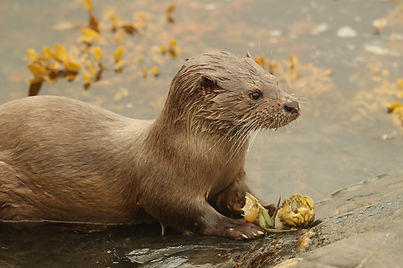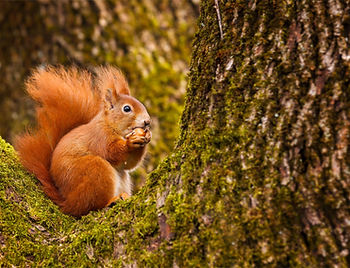Broad Hill Afforestation


This Woodland Carbon Code project is located in the Upper Clyde Valley. The planting area covers 66 hectares. The planting scheme comprises a combination of mixed conifers, to achieve rapid growth and timely carbon sequestration, alongside mixed native broadleaves. The species planted includes Scots pine, Douglas fir, Norway spruce, Sitka spruce, silver birch and sycamore.
The estate already contains significant areas of diverse woodland. A substantial proportion of these trees are mature with broad trunks and a very high canopy.
A remarkable aspect of the new woodland creation on the estate is that the trees were planted on steep hillsides. The terrain was too steep to employ heavy equipment. Therefore, the trees were planted by hand with the foresters strapped to ropes whilst abseiling down the slopes.
Biodiversity
The newly planted woodlands, comprising 90,736 trees, will expand the established forest cover. Therefore, they will expand habitat suitable for woodland wildlife including Red squirrels, Pine martens, goshawks, roe deer, woodpeckers, owls, crossbills, bull finches, siskins and tree creepers. Other important species living in the landscape include otters, ospreys, short-eared owls, hen harriers, golden eagles and sea eagles.
Water Impacts
The newly planted woodland reduces runoff into a lake which is immediately adjacent on the property. Importantly, the new woodland will reduce silting of the local burns/streams which themselves comprise part of the Clyde River Basin. As such, the project will contribute to the water clarity of the Clyde River, one of the largest rivers in the UK. Apart from being home to the UK submarine fleet, the Clyde is also home to a range of fish such as Atlantic salmon, brown trout, pike, grayling and barbel.
The estuary is home to a range of seabirds which feed at sea: kittiwakes, guillemots, razorbills, shearwaters, fulmars, skuas, puffins, ospreys and sea eagles. The coastal waters are also home to a range of mammals: otters, harbour seals, grey seals, harbour porpoises, bottle-nosed dolphins, white beaked dolphins, Risso’s dolphins, common dolphins, killer whales and minke whales.
The Scottish Borders
The project is located in the Scottish Borders. The Borders are located to the north of England and south of Scotland’s central belt which itself is bracketed by Glasgow and Edinburgh. There are no major cities located in the Borders. The landscape is characterised by bucolic charm, vast forests, hills and mountains. In fact, areas of the Borders are every bit as wild as the Highlands. When it comes to the coastal areas, they are some of the most biodiverse in the whole of the United Kingdom.
The Tweed River Basin covers more than half of the Scottish Borders and reaches to the east coast. This is the most important river basin in the UK in terms of its scale and the quality of the Tweed River. The Tweed is the finest salmon and trout fishing river in the UK. The Clyde River basin, also very important for river and sea life, covers the western third of the Boarders.
Scottish Nature
Scotland is recognised for its world-class, diverse landscapes with three UNESCO World Heritage Sites: St Kilda Biosphere, Wester Ross Biosphere and Galloway & Southern Ayrshire Biosphere. A fourth UNESCO World Heritage Site designation is pending for the Flow Country. Located at the top of Scotland, this is the largest wetland area in the whole of the United Kingdom.
In addition to the UNESCO designations, the Scottish Highlands which cover half of the country are designated as an Endangered Landscape by the Cambridge Conservation Initiative. There are only seven Endangered Landscapes identified in the whole of Europe.
From diverse seas to rugged mountain tops, the Scottish landscape is varied and home to a diverse range of species. It is true that vast areas of Scotland have been altered. Today, less than 1% of the Caledonian Forest which covered most of the Highlands remains. More than 80% of its wetlands have been drained.
More than a quarter of Scotland’s biodiversity has already been lost according to the Scottish Government. And yet, Scotland is the most biodiverse area of the United Kingdom. Examples of species that have become locally extinct include the brown bear, wolf, moose and Eurasian lynx. Those that have been successfully reintroduced to Scotland include the sea eagle and Eurasian beaver.
Those remaining pockets of virgin forest and pristine wetlands are remarkably diverse. From a landscape conservation standpoint, there is world-class opportunity to protect and to restore buffer zones to these pristine pockets of nature at scale. Then the rare flora and fauna can repopulate a larger part of the landscape.
The United Kingdom
The UK is ranked by the United Nations as 189th out of 218 countries for biodiversity intactness. This means that the landscape has been fundamentally altered. This presents an opportunity for habitat restoration at scale to expand remnants of high-grade habitats whilst combatting climate change.
Opportunities for investment include purchasing Pending Issuance Units in small to large batches. Contact richard@highlandcarbon.com with the timing and quantity of your offset requirements to receive a pricing proposal and details of associated benefits.
At a Glance: Broad Hill Woods
Location
-
Biggar, Lanark, Scottish Borders
Offsetting Capacity
10,335 TCO2e
Status
-
Validated
Scale
-
Mixed native broadleaves and mixed conifers
-
90,736 trees on 68 Hectares
Special Features
-
The estate is already home to mature, well-established woodlands
-
The new planting schemes expand that established cover
-
A new lake has been created adjacent to the project site
Sustainable Development Goals
-
Climate Action
-
Life on Land
-
Life Below Water
-
Partnerships for the Goals
Recognised Offsetting Framework
Woodland Carbon Code
Project Status
-
Planting completed during spring of 2022
-
Project to be validated autumn 2022
Recognised Offset Standards
Pending Issuance Units becoming Woodland Carbon Units





